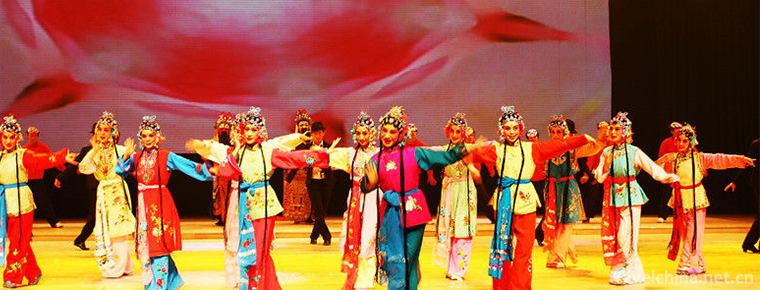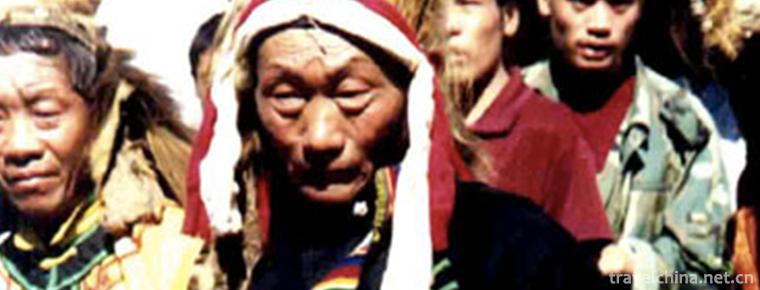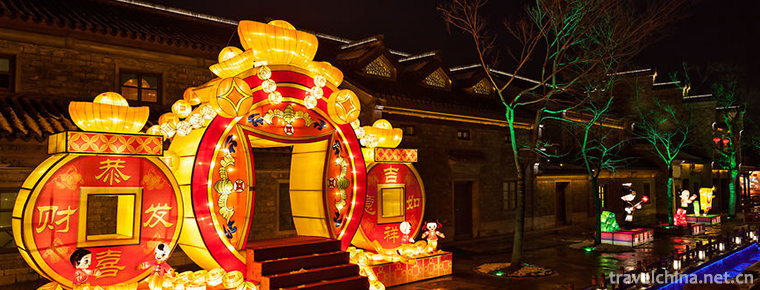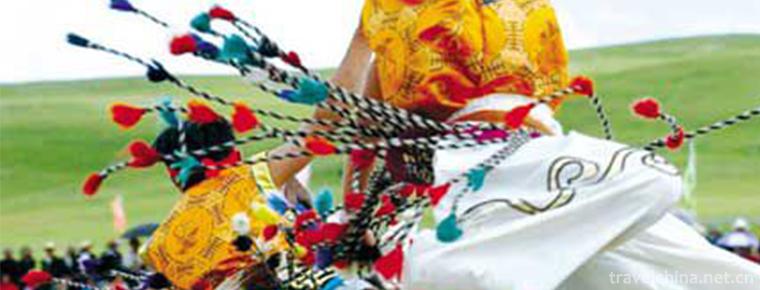Yanbei Playing with Children
Yanbei Playing with Children
Yanbei children's play, also known as cough cavity, is popular in Datong City, Shanxi Province and its surrounding traditional drama, one of the national intangible cultural heritage.
Yanbei Playing Children originated in Datong, Huairen and Yingxian of Yanbei area, Shanxi Province. It was based on the popular tune of "Playing Children" in Jin and Yuan Dynasty, and was developed under the influence of other opera music and folk songs. Yanbei play children's melody is simple, graceful, bold, delicate, full of local flavor, in flute, Sheng, pipes, strings, beautiful and moving. Its performance form is purely stage performance. It is good at dancing in the integrated art of singing, doing, reading and playing. In a play, the traditional singing tune basically repeats the main song (plain music) many times. It belongs to a combination of single-track forms, with euphemistic melody and fluent melody. It is easy to express tragic and stirring feelings.
In May 2006, Yanbei Playing Children was approved by the State Council to be listed in the first batch of national intangible cultural heritage, numbered IV-41.
historical origin
As for the folklore about the formation of children's play, the expert's textual research has more legendary color and interest. There are two representative statements: one is that Wang Zhaojun of the Han Dynasty went to the fortress, witnessed the desolate scenery along the way, and felt homesick. He passed through Datong of Shanxi Province, Pipa shop at night, played the piano and sang, and cried and dumb. To commemorate Zhaojun, the local people imitated Zhaojun's hoarse voice and melody. Following her sad cries and passing around, it became such a melody. Second, in the Tang Dynasty, Emperor Ming of the Tang Dynasty had to weep all day long and keep healing. A group of artists were invited to sing a song. The emperor laughed when he heard it. Emperor Ming of the Tang Dynasty rejoiced and gave the song the name of Playing a Child.
According to the inscription on the stage wall of Guanwangmiao in Beiloukou, Yingxian, it is recorded that "Children's Playing Class came here on June 24, 13, Daqing Daoguang." Thus it can be seen that the formation time of playing children is at least before Daoguang, and even can be traced back to the Kangxi and Qianlong periods.
Children's play, originally spread in Datong, Huairen and Yingxian in northern Shanxi Province, is now concentrated in Datong City, Shanxi Province. In the early days of its emergence, children's play actors were all farmers, and temporary class clubs were organized to perform in the leisure season, with a small range of activities. During the reign of Jiaqing and Daoguang in the Qing Dynasty, the class clubs of this kind of drama once spread all over the banks of Sanggan River. After Guangxu period, with the maturity and development of drama, the flow and activity area of artists expanded year by year, and their footprints reached Yuci and Yangquan in the south, Ningwu and Shenchi in the west, Lingqiu and Guangling in the east, and Hetao in Inner Mongolia in the north. In the fifth year of Xianfeng, Yanbei suffered from severe drought and drought. A large number of farmers "exported" to make a living. Children's play was also spread to Inner Mongolia and even to the Yellow River Hetao.
In the 1920s and 1930s, children's play developed greatly. Famous children's play artists emerged constantly. On the eve of the Anti-Japanese War, children's play artists who sang on the stage were Cui Fu (Narcissus), Zhang Shengyin (Camel Dan), Zhao Zhen (Gai Tianhong), Xin Zhiji (Feiluomian), Gao Xian (Sanwadan) and so on. The more prestigious classes are: Kaiyuan Class in Datong, Wangsheng Class in Kouquan, Dusheng Class in Huairen, Yongxing Class in Yingxian, Tianbao Class and Heyi Class.
After liberation, playing with children became more active. In 1954, Daren County set up the first professional children's play troupe, the Workers'and Peasants' Opera Troupe (later renamed Datong Civil Drama Troupe). Among the rural amateur theatre troupes, children's troupes are the first of all kinds of local operas.
Cultural characteristics
Music for voices in a Chinese Opera
Children's play has its own characteristics. Its traditional singing method is to use the back voice, that is, the voice is emitted from the back of the throat, which is similar to the Buddhist voice. This pronunciation is good at expressing sad scenes. Before each lyric, it is customary to use "cough cavity", "cough" in front of the lyrics. The "cough cavity" of other Shanxi operas is generally after the lyrics, but the "cough" of playing children is mostly before the lyrics. The cough cavity of the first Lyric can arouse the audience's interest. The cough cavity before the second Lyric can serve as a link between the preceding and the following. It can not only make up for the deficiencies of the preceding sentence, but also pave the way for the following sentence. This kind of singing is quite rare in opera, so it is also called cough cavity. Fold-and-roll technique is often used to deal with lyrics. Some words can be repeated singing, which is also a characteristic of playing children's games.
Tune
The melody of playing children belongs to the divertimentary system, and the main singing tone is "plain tune", whose form of words is very similar to that of Yuan and Ming Ci songs "playing children". "Pingquzi" consists of eight sentences, of which one, two, three, five, six and eight are rhymed separately, and four and seven are reversed. This is its inherent characteristic of "three sections and eight sentences, four or seven ruts". In addition, playing children also absorbs the "boards" and "whitening" of Bangzi opera, so that the form of the board cavity and playing children's singing are mixed together, changing freely and showing no trace.
In the early stage of the formation of children's play, the singing system of children's play was repetitive and strictly abided by the rules of music licensing. At the peak of the late Qing Dynasty, it absorbed many kinds of music, which enriched the children's singing music, such as Saying Buzi, Xibuzi, Bingbuzi, stacking Buzi, string, plum puzi, inverted three boards, plum melody, crepe and so on.
In the accompaniment of children's play, a large number of folk instrumental music were selected, such as Liu Qingniang, Huang Ying Liangwing, Suona Opera team and visitation.
Musical Instruments
Playing children's musical instruments and music performance is very unique, its percussion music mainly includes plate drum, big gong, big cymbal, small gong, small cymbal. The Gong and drum Sutras of children are not only used to cooperate with movements and interludes, but also to start and end with gongs when singing the two and three sentences of "Pingqu". Male actors sing big gongs, big cymbals, female actors sing small gongs, small cymbals, the added gongs do not affect the effect of the lines.
The traditional stringed instruments in Wenchang are only two Banhu and one Sumei, the flute. Big moustache, thick bow and ponytail, pulled up only by two strings, so that both strings simultaneously produce sound, forming a natural harmony, playing a loud voice, the volume is larger than other plays. Although there are only three strings, they are playing gracefully and loudly, and they merge with voice singing to form a complete feature of their own music. The instruments in the martial field are bangu, face drum, gong, big cymbal, small gong, small cymbal and so on, but at present only Gong Zigong (commonly known as horse gong) has a fixed sound. In addition, playing with children also has special props - "masonry end", that is, a table, a stool and a curtain, this form is not available in other operas. The performance of children's play is very lively, singing and dancing. It has its own unique features, such as digging, whipping, fan and so on. "Fan Tomb" is the most reflective dance repertoire of children's play, in which the little lady wears a plain filial piety dress, carries a paper lamp on her left hand, holds a folding fan on her right hand, fans around the lamp, moves her back and forth legs forward, rotates around and around, fast and slow, and varies in many ways, and is actually a place for other dramas. Rare. Facial performances are more exaggerated than other plays, and Facebook is unique. For example, the pig in the fan grave, the upper part of the face is painted with oil colored face, and the lower half is a mask, that is, a three dimensional pig's mouth. The two big ears are different from those of other theatres. The pig is wearing a black wide sleeved kamsak, walking or raising legs, slow feet, swinging around two broad sleeves, or bending the elbow to twist the head, walking quickly. The exaggeration procedure is similar to the folk "Yangge". In addition, the clown's performance is also very humorous and distinctive. Children's play is mostly tragic, but because there are always repeats of clowns performing interestingly, it still makes the local people very interesting.
Perform
The performance of children's play is very lively, singing and dancing. It has its own unique features, such as digging, whipping, fan and so on. "Fan Tomb" is the most reflective dance repertoire of children's play, in which the little lady wears a plain filial piety dress, carries a paper lamp on her left hand, holds a folding fan on her right hand, fans around the lamp, moves her back and forth legs forward, rotates around and around, fast and slow, and varies in many ways, and is actually a place for other dramas. Rare. Facial performances are more exaggerated than other plays, and Facebook is unique. For example, the pig in the fan grave, the upper part of the face is painted with oil colored face, and the lower half is a mask, that is, a three dimensional pig's mouth. The two big ears are different from those of other theatres. The pig is wearing a black wide sleeved kamsak, walking or raising legs, slow feet, swinging around two broad sleeves, or bending the elbow to twist the head, walking quickly. The exaggeration procedure is similar to the folk "Yangge". In addition, the clown's performance is also very humorous and distinctive. Children's play is mostly tragic, but because there are always repeats of clowns performing interestingly, it still makes the local people very interesting.
Representational repertoire
Children play has its own traditional repertoire, among which there are more than forty representative plays, such as White Horse Pass, Seven Sages, Three Filial Pieties, Playing Buddhist Hall, Couplet Pearls, Giving Jingniang, Golden Wood Fish, Lion Cave, Garden Club, Erlongshan and Catching-up. Playing children's roles are divided into five elements: dividend, black, raw, Dan and ugly. They absorb a lot of folk dance movements in their performances, which are closer to life and full of local flavor.
Inheritance and Protection
Inheritance value
In the design of "Little Widow Crying Tomb" in "Playing Children", the folk song "Drawing Qianlong in February" is selected from the folk custom of asking for rain on February 2 in Yanbei Lunar calendar, which is full of the local flavor of folk life. There is also the "hemp crown" worn by the lady in Fan Tomb, which comes from the "filial cap" in Yanbei Baishi. Datong Playing Children's Troupe's performances such as Pipa Sound (2007) and Tang Ming Emperor and Playing Children (2006) are all historical dramas adapted from the local historical legends. From the Local Opera repertoire can also reflect strong folk cultural appeals, such as the praise of traditional virtues, the desire for justice, the belief in retribution for cause and effect, the identification of fatalism, the verbal criticism of corrupt officials and their corrupt practices, etc., reflecting the love and hatred of the people, is the people. The rich connotation of popular culture is vividly expressed in traditional operas.
Heritage figures
Xue Ruihong, artistic name "Xiaofeiluomian", female, Han nationality, born in May 1966 in Huairen County, Shanxi Province. In May 2006, Yanbei Playing Children was listed in the first batch of national intangible cultural heritage list of traditional drama category, project number IV-41. In February 2008, Xue Ruihong was selected as the representative successor of the second batch of national intangible cultural heritage projects. Xue Ruihong is a national first-class actor. Born in a family of pear orchards, his father Xue Guozhi, artistic name "Xiao Fei Luo Mian", a famous child-playing artist, was taught by "Fei Luo Mian" Xin Zhiji. Xue Ruihong was educated by her parents'art since childhood. She was admitted to the Children's Playing Class of Datong Art School in 1979. She majored in Xiaodan, Huadan and Qingyi. She graduated in 1982 and joined the Children's Playing Troupe of Datong City.
Wang Binxiang, male, Han nationality, born in June 1962, is from Yingxian County, Shanxi Province. He lives in Datong City, Shanxi Province. In February 2008, Wang Binxiang was selected as the representative successor of the second batch of national intangible cultural heritage projects and declared in Datong City, Shanxi Province. Wang Binxiang is a national first-class actor. In 1979, he was admitted to "Children Playing Class" of Datong Art School. He was taught to play children actors Xin Zhiji, Gao Xian, Xue Zhiguo, Sun You and so on. Graduated in 1982 and joined the Datong Children's Playing League.
protective measures
In 1978, Datong Art School enrolled children's play classes. In 1982, a children's play troupe was set up in Datong Art School on the basis of teachers and students of children's play classes. In 2003, Datong Culture and Art School also opened children's play classes, which trained successors to protect the inheritance of local operas and made important contributions to the protection and development of local operas.
In 2013, in order to better inherit, protect and develop children's play art, Datong Children's Play Drama Center and Datong City School of Culture and Art jointly recruited 18 children's play trainees.
social influence
Important performances
From August 3 to 5, 2017, the Datong Children's Play Training Center conducted a three-day public welfare propaganda performance of the national intangible cultural heritage "Yanbei Children's Play" in Baijiazhuang Village, Datong County.
On August 19, 2017, the Datong Play Children's Opera Research Center performed the opera "Yangfu Sending Prints" on the ancient stage of Guandi Temple Scenic Area in the ancient city.

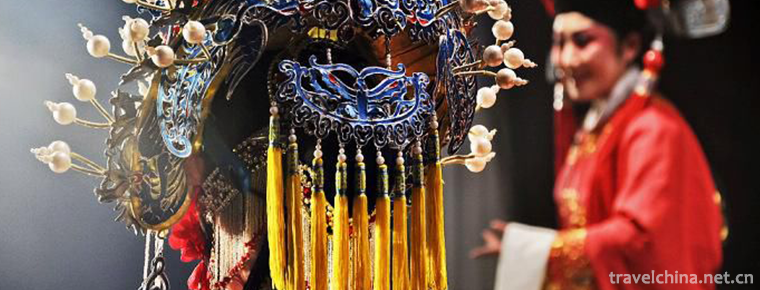
-
Yangma Island Scenic Area
National AAAA-level tourist attractions, Shandong Province "Top Ten Tourist Scenic Spots", 2008 "Tourists'Favorite Charm Scenic Spots". Located 9 kilometers north of Ninghai Town, .
Views: 142 Time 2018-12-26 -
Harbin Jinyuan Cultural Tourist Area
Harbin Acheng Jinyuan Cultural Tourist Area, the capital of Jin Dynasty from 1115 to 1234, is the only well-preserved capital site of Jin Dynasty. Up to now, the Royal City's Wumen Gate and palace bui.
Views: 512 Time 2019-01-13 -
Taiping Ancient Town Scenic Area
Taiping Ancient Town is located at the junction of Gulin River and Chishui River, 35 kilometers away from Gulin County. Across the river from Xingmin Township in Xishui County, Guizhou Province.
Views: 102 Time 2019-02-13 -
Wu Songgun Taiwan Wetland Forest Park
Wu Song Gu Taiwan Wetland Forest Park: Wu Song Gu Taiwan Wetland Forest Park with a total area of 53.46 hectares is located in the eastern part of Baoshan District.
Views: 190 Time 2019-02-22 -
Cham
The Yi epic, recorded in the old Yi language and widely circulated, describes the origin of all things in the Yi legend. The Yi people call it a "search" to describe the origin of a thing be.
Views: 157 Time 2019-04-15 -
Western Fujian drama
Western Fujian Han Opera, formerly known as "Waijiang Opera", also known as "Ran Tan", is one of the local operas in Fujian. He was born out of foreign operas, absorbed Hakka diale.
Views: 205 Time 2019-06-05 -
Qiangge war
The Battle of the Qiang is the most famous one among the folk epics of the Qiang people. It describes the history of the ancestors of the Qiang people who had experienced hardships and hardships.
Views: 164 Time 2019-06-10 -
Qinhuai Lantern Festival
Qinhuai Lantern Festival, also known as Jinling Lantern Festival and Confucius Temple Lantern Festival, is a popular folk cultural activity in Nanjing. It is mainly held from Spring Festival to Lanter.
Views: 148 Time 2019-06-10 -
Reba Dance
Reba dance is a form of dance performed by Tibetan "Reba" artists. Reba is a group of street artists who make a living selling arts (usually composed of family as the basic unit) performing,.
Views: 175 Time 2019-06-11 -
Guangdong Opera YueJu
Guangdong Opera, also known as "Guangdong Opera" or "Grand Opera", is one of the traditional operas in Guangdong. It originates from Nanxi Opera and is popular in Guangdong and Gua.
Views: 173 Time 2019-07-16 -
Zhaojue Temple
Zhaojue temple, located 5 kilometers north of Chengdu, is known as "the first Zen forest in Western Sichuan". It was changed into a Buddhist temple in the Tang Dynasty (627-649) and named Jianyuan temple..
Views: 121 Time 2020-10-18






